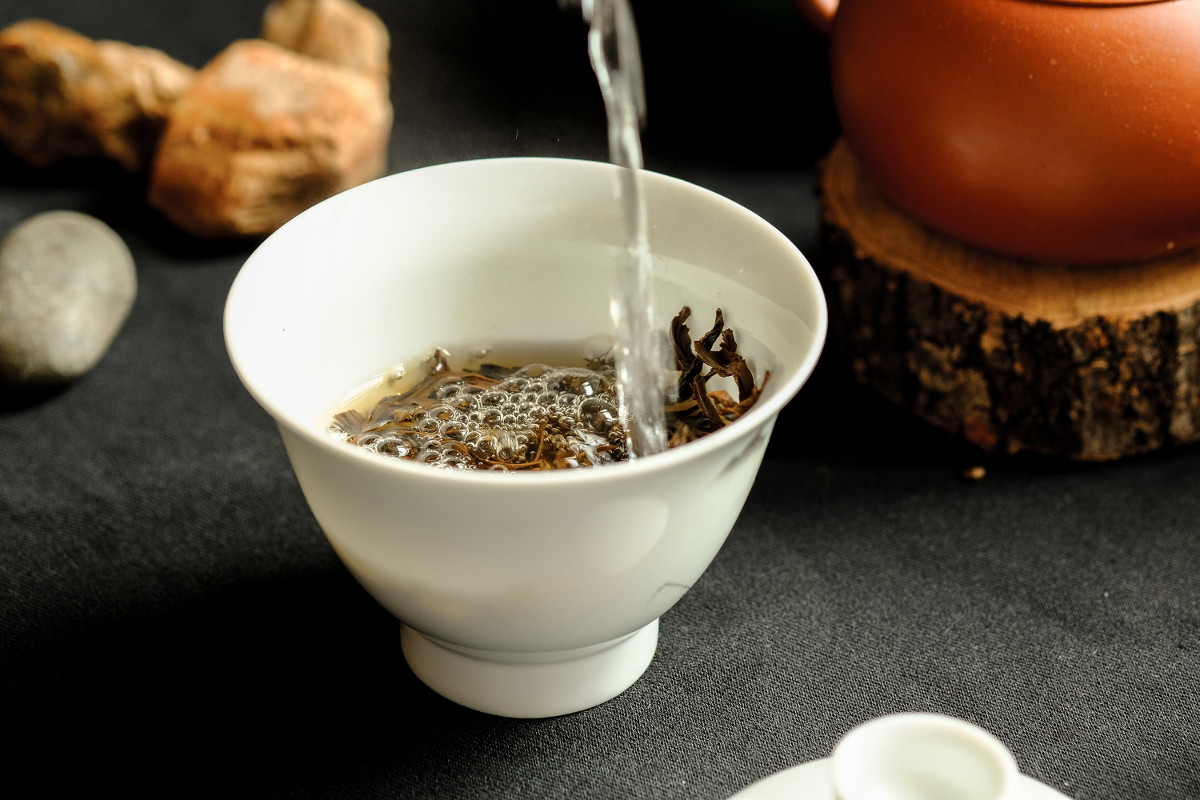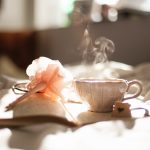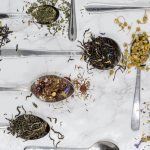In a country where coffee rules, you think you’d be hard-pressed at finding decent tea houses around Australia. But, despite this, the tea trend is well-established here, and that’s partly thanks to the Chinese influence.
One such man who’s made his mark on Australia’s tea-drinking scene is Raymond Leung – Tea Master at Zensation Tea House in Waterloo, Sydney – where his passion for tea started brewing at a young age.
“My father took me to an old tea house when I was really young,” Raymond said. “And in those days, I found it quite amazing. Everybody was drinking out of a teacup with a lid – that’s the old-fashion way.”
After experiencing Australia through the 90s and building up his expertise of tea culture in his home country of China, Raymond wanted to share his acquired knowledge and passion in his own tea house here in Sydney. In it, he breathes the underlying powers of tea that originate within his home country.
“Chinese have been using tea as a medicine for a long time, and they still are,” Raymond said. “We combine all types of herbs, and then we drink different teas for different ailments.”
According to Raymond, Chinese tea has the quality to protect humans from free radicals – the unstable atoms that can damage cells and make us prone to illness and poor skin – resulting in tea drinkers appearing much younger and healthier thanks to their tea-drinking habits.
But Raymond’s Zensation Tea House is not just for medicinal purposes. It’s also for Australians to experience Chinese tea-drinking culture that surpasses more than just your average earl grey blend.
In a way, it sounds almost like wine-making:
“For me as a tea master – and the knowledge on the cultural side – you look at the back of tea leaves, when did you pay, how healthy and how small the tea leaves, which area they picked from, what altitude they picked from…”
But for those of you who are new to the experience, Raymond offers a map:
“Start off with green tea, and then explore the different colours – white, yellow, red, black. And find the one you enjoy the most.”
The Caffeine Hit: Tea vs Coffee
- Tea in the morning. Photographed by Carli Jeen. Sourced via Unsplash
For all you coffee drinkers who are wanting to shake things up, Raymond recommends sipping on green tea instead.
“Most of the teas have caffeine, at different levels,” Raymond said. “Japanese green tea will go to about 9-10. Chinese Taiwanese green tea will go to 6-8. And then you have black tea or red tea, which will go to about 3-5.”
In fact, some tea leaves contain more concentration of caffeine than a coffee bean. But, due to the process, coffee extracts more of the stimulating substance. Because of this, the way caffeine from tea is released in the body is vastly different from that of coffee.
“Tea is more like a slow-release caffeine system; it slowly builds up, increasing alertness and then it plateaus – it’s a lot softer than caffeine in coffee.”
If you’re a coffee drinker, we don’t need to tell you how quick a shot of espresso works.
The Various Health Benefits of Tea
According to Raymond, teas offer a range of remedies for many medical ailments. In fact, many studies suggest that teas can help fight cancer, diabetes and heart disease.
“And it’s also very good for weight management,” Raymond said. “One of the great teas for weight management is the Pu-Erh tea, a fully-fermented tea.”
“In the old days, the people in north-western China, they’d eat a lot of meat – like lamb and sheep. The Pu-Erh tea would bring out the fats for better digestion.”
And many herbal teas are proven to be effective mental health remedies.
“If you want to have relaxation, camomile is good,” Raymond said. “And then we have chrysanthemum, which is in a similar family to chamomile. And then we have blended Australian lemon myrtle – also very very relaxing.”
As Raymond puts it: “If you look for digestion, go for black tea. If you want relaxation, you go for white tea.”
Bringing Chinese Tea Culture To Sydney
- Tea. Photographed by Alice Pasqual. Image via Unsplash
Behind the tea mastery, Raymond is also an interior designer, event coordinator and restauranteur. He has been involved with the Dragon Boat Festival and Chinese New Year with the City of Sydney, helped design multiple restaurants, and even owned and operated BAMBUSIA in Bondi Junction and Bondi Beach.
“After my involvement in all this, I wish to continue to have a business with both Chinese cultural background and easier to operate. Hence why I opened my tea house in 2002 at the previous address in Surry Hills.”
Since opening, Zensation Tea House is now residing in Waterloo, with all the artistic elements of a true Chinese-style cafe.
And as a final note, Raymond offers his own personal favourite tea that you can buy only at Zensation.
“At the tea shop, we’ve been promoting one particular oolong tea, which is named “Milky Oolong”. This particular tea is naturally harvested in Taiwan. They are very proud of their high mountain tea, which is grown between 800-1500-metres above sea level. And they still maintain hand harvest and hand grow to produce this wonderful tea called oolong.”
To experience and sample an exceptional range of teas, visit Zensation Tea House at 160/806 Bourke St, Waterloo NSW 2017. On top of that, you can also shop online via their website.
Looking to sustain your stomach? Check out these 5 Things You Should Be Doing to Maintain a Healthy Gut. Also, if you want to know how “green” you are when it comes to sustainable living, try our latest environmentally-friendly quiz!





Sydney’s best tea house is spilling the tea…